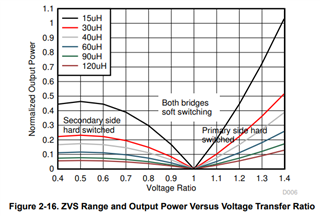Hello,
For the dual active bridge topology at Bidirectional, Dual Active Bridge Reference Des for Level 3 EV Charging Stations (Rev. C)., we have query for plotting the graph below -

We are working on 7kW onboard charger design.
Can you please let us know how to plot this graph.
For X-axis, Voltage ratio = (Vout / Vin) * N; where N = turn ratio (Np / Ns).
Have you used any equation, formulae to plot this graph?
The motive behind this is to find the ZVS region for DAB topology. Or pls suggest how to find the ZVS region graphically.
Regards,
Abhishek D.



